2004 Puchon International Fantastic Film Festival Report
by Tom Giammarco, Davide Cazzaro, and Darcy Paquet
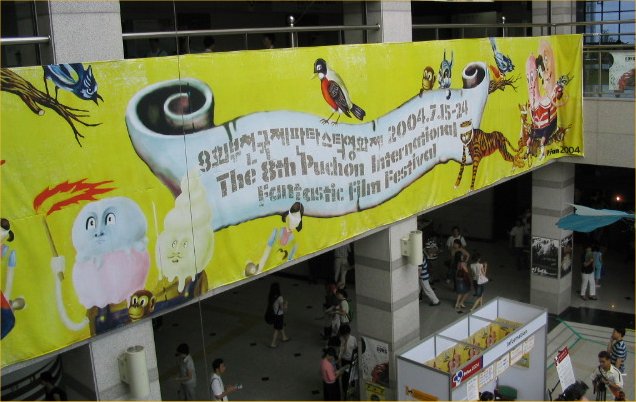
Boksagol Cultural Center
Tom Giammarco
The 8th annual Puchon International Fantastic Film Festival was held from July 15-24. This year, the festival screened 261 films from 32 countries under the theme of Love, Fantasy And Adventure.
In the first half of the week, the weather looked as if it were going to be a major player. The rainy season was a little late ending this year, and the first four days of the festival were marked by nearly constant rain with periodic downpours. This resulted in the cancellation of some outdoor events but, fortunately, did not seem to make much difference to the audience who showed their appreciation of this event by turning out in large numbers on the first weekend. But by Monday, the sun returned and outdoor activities could resume.
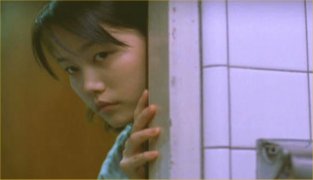 As usual, at film festivals, I tried to watch as many short films as I could. Relatively few shorts are ever released as part of compilations on DVD and there are simply no other venues to see most of these films outside of festivals. They are, however, an important contribution to cinema as many shorts are created by new directors who may, someday soon, be shaping the direction of cinema. PiFan offered a wide range of short films this year, eight in competition for awards. I found myself drawn to the non-competition selection entitled Fantastic Short Films. The section was a collection of 89 films divided into seven groups and screened on different days. Three clear favorites emerged. Home Sweet Home (pictured left), directed by Um Hye-jung, follows a family which has fallen into a pit of debt from which, with the father unemployed, there seems to be no escape. On the verge of losing everything, the family struggles to make a fateful decision. The young actress Han Bo-hae (formerly of KBS2's long-running children's drama, Magic Kid) turns in a solid, dramatic performance. Thirsty was another movie that stood out. Director Lee Kyeong-shik manages to develop two very likable characters in the soldier-on-leave and the woman who meet on a bridge they both plan to jump from. At 29 minutes, it was little longer than most of the short films screened, but it was one of those movies where I lost track of time. My third favorite was David Paton's Pork Chop, which was a light comedy about a sweet, frumpy little old lady and her revenge on the surly local butcher.
As usual, at film festivals, I tried to watch as many short films as I could. Relatively few shorts are ever released as part of compilations on DVD and there are simply no other venues to see most of these films outside of festivals. They are, however, an important contribution to cinema as many shorts are created by new directors who may, someday soon, be shaping the direction of cinema. PiFan offered a wide range of short films this year, eight in competition for awards. I found myself drawn to the non-competition selection entitled Fantastic Short Films. The section was a collection of 89 films divided into seven groups and screened on different days. Three clear favorites emerged. Home Sweet Home (pictured left), directed by Um Hye-jung, follows a family which has fallen into a pit of debt from which, with the father unemployed, there seems to be no escape. On the verge of losing everything, the family struggles to make a fateful decision. The young actress Han Bo-hae (formerly of KBS2's long-running children's drama, Magic Kid) turns in a solid, dramatic performance. Thirsty was another movie that stood out. Director Lee Kyeong-shik manages to develop two very likable characters in the soldier-on-leave and the woman who meet on a bridge they both plan to jump from. At 29 minutes, it was little longer than most of the short films screened, but it was one of those movies where I lost track of time. My third favorite was David Paton's Pork Chop, which was a light comedy about a sweet, frumpy little old lady and her revenge on the surly local butcher.
One of the highlights of this year's festival was the screening of Yu Hyun-mok's An Empty Dream. Originally shown in 1965, the movie failed to generate much interest except among people already interested in film style as noted in an interview conducted with Yu Hyun-mok by Festival Director Kim Hong-joon. Because of the erotic imagery and six seconds of rear nudity, director Yu found himself in and out of court for more than a year on charges of violating public obscenity laws. It didn't matter that actress Park Su-jeong was actually wrapped in flesh-colored cloth or that the 'nudity' did not make the final cut of the film and audiences never saw it. Following that disaster, where director Yu wound up with a criminal record, An Empty Dream was not shown again for the next 40 years. In the time between its original release and PiFan 2004, the last 13 minutes of the soundtrack were lost. Composer Cho Seong-woo, who composed the scores of movies like Barking Dogs Never Bite, One Fine Spring Day and Memento Mori, was called in to provide an original composition for the final reel of the film. Although I personally liked it, Mr Cho expressed some dissatisfaction with his work after the screening. However, he had also said in an earlier interview that he hopes to redo the entire score of the film if it were ever to be fully restored.
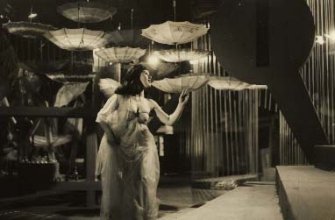 An Empty Dream (pictured right) was based on a Japanese screenplay by writer/director Tetsuji Takechi. Yu Hyun-mok mentioned that he had never seen Takechi's 1964 movie, Hakujitsumu (aka Day-Dream) due to the difficulty of obtaining Japanese films. However, the script had a far more erotic feeling than what he knew the Korean censors of the time would allow and many changes had to be made. The story takes place in a dream bought on by a visit to a dentist's office. Since nearly the entire movie is set in a dream, the scenery was created with minimal intrusion of realism and the sets were quite effective in giving this nightmare world a Dr Seuss-like quality with houses at odd angles and strange curves in rooms or roads that could serve no purpose. The main plot involves the 'good' male patient (Shin Sung-il) trying to rescue a female patient (Park Su-jeong) from a fate-worse-than-death at the hands of the dentist (Park Am) who, in the dream, has evolved in a mustache-twirling, top-hat-and-cape wearing villain straight out of a silent movie. While the story does not compare with Yu's masterpiece, The Aimless Bullet (Obaltan), it was very enjoyable and offered a nice change from the storylines and structure of filming that we generally see in Korean movies from the mid-60's. The screening of this restored film proved to be a success and was the first time that a Korean retrospective film screened before a sold-out audience.
An Empty Dream (pictured right) was based on a Japanese screenplay by writer/director Tetsuji Takechi. Yu Hyun-mok mentioned that he had never seen Takechi's 1964 movie, Hakujitsumu (aka Day-Dream) due to the difficulty of obtaining Japanese films. However, the script had a far more erotic feeling than what he knew the Korean censors of the time would allow and many changes had to be made. The story takes place in a dream bought on by a visit to a dentist's office. Since nearly the entire movie is set in a dream, the scenery was created with minimal intrusion of realism and the sets were quite effective in giving this nightmare world a Dr Seuss-like quality with houses at odd angles and strange curves in rooms or roads that could serve no purpose. The main plot involves the 'good' male patient (Shin Sung-il) trying to rescue a female patient (Park Su-jeong) from a fate-worse-than-death at the hands of the dentist (Park Am) who, in the dream, has evolved in a mustache-twirling, top-hat-and-cape wearing villain straight out of a silent movie. While the story does not compare with Yu's masterpiece, The Aimless Bullet (Obaltan), it was very enjoyable and offered a nice change from the storylines and structure of filming that we generally see in Korean movies from the mid-60's. The screening of this restored film proved to be a success and was the first time that a Korean retrospective film screened before a sold-out audience.
Last year when I attended Pifan, I was introduced to Bollywood which developed into a strong interest in these films. This year, the festival offered three Indian movies. All of them had themes focussing on important issues in both India and society at large, but they proved enjoyable. It seems that even the most serious topic can be improved upon with an oddly placed musical number. The three movies that screened this year were The Blind Camel, which highlighted the issue of the problems between India and Pakistan; Virumaandi, a film tackling prison conditions and capital punishment that was later selected for the European Fantastic Film Festival Federation Asian Award (EFFFFA); and, my personal favorite of this group, Raghu Romeo, which focussed on the power of the media.
There were other sections in the festival as well. Among the features were "Welcome To Tromaville" celebrating 30 years of film from the independent production company, Troma; "Corpse Fucking Art: The Films of Jorg Buttgereit" focussing on necrophilia and leading off with the infamous Nekromantik; and a Shaw Brothers Retrospective offered a proper dose of kung-fu and The Mighty Peking Man as well. "Films As Subversive Art: Amos Vogel and Cinema 16" highlighted avant-garde films and documentaries programmed by Amos Vogel in postwar New York; and "Pioneers of Japanese Animation" featured rare animated shorts from the 1920's to the mid-50's.
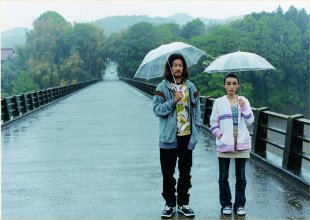 Stuart Gordon, director of Re-Animator and of PiFan's opening film King Of The Ants, led the five member jury in selecting the winners of the feature film awards. The movie which claimed The Best of Puchon Award was the Korean film Arahan, which also took the Pruzio Citizen's Choice Award. Director Leonardo Di Cesare of Argentina took home the award of Best Director for his movie Food Life Delivery. The Best Actor award was split between the co-stars of Aaltra, Benoit Delepine and Gustave Kervern and the choice for Best Actress was Nat Wattanapat from Thailand for her role in My Suicide. The Jury Award went to the deserving The Taste Of Tea by Katsuhito Ishii (pictured left). Three prizes are awarded to short films as well. Vito Rocco's Goodbye Cruel World won the Grand Prize and both the Jury's Choice and Citizen's Choice went to director Neele Leana Vollmar's My Parents.
Stuart Gordon, director of Re-Animator and of PiFan's opening film King Of The Ants, led the five member jury in selecting the winners of the feature film awards. The movie which claimed The Best of Puchon Award was the Korean film Arahan, which also took the Pruzio Citizen's Choice Award. Director Leonardo Di Cesare of Argentina took home the award of Best Director for his movie Food Life Delivery. The Best Actor award was split between the co-stars of Aaltra, Benoit Delepine and Gustave Kervern and the choice for Best Actress was Nat Wattanapat from Thailand for her role in My Suicide. The Jury Award went to the deserving The Taste Of Tea by Katsuhito Ishii (pictured left). Three prizes are awarded to short films as well. Vito Rocco's Goodbye Cruel World won the Grand Prize and both the Jury's Choice and Citizen's Choice went to director Neele Leana Vollmar's My Parents.
Less 'artsy' than the Jeonju Festival and more focussed on genre than the Pusan Festival, PiFan is an excellent way for fans of fantasy, science fiction, horror and animation to spend a week. And for those who may not wish to spend the entire day watching movies, the city of Puchon offers a wide variety of sightseeing opportunities. One of the most popular is the Yainshidae set. This open set is a recreation of the major streets of Seoul circa 1920 or 1930, and is often used in filming period dramas or movies. Most recently, it provided the city backgrounds for the movies Taegukgi and Raging Years. For a small admittance fee, guests can stroll around the grounds which will be instantly recognizable from the movies. Of special interest to families with young children are the Korean Animation Museum complete with a comic book reading room, and a Natural History Museum with well-maintained aquariums, live insect displays and a collection of dinosaur bones. Using the subway, it is easy to make a short trip into Seoul or to Incheon. It is less than an hour to ride to Wolmi Island which boasts a perpetual festival atmosphere and a scenic boardwalk along the sea.
I would like to compliment the Pifan staff and volunteers on a job well done. Even in times of difficulty, like when the computer systems crashed making ticket reservation difficult, the workers handled themselves with poise and professionalism. The volunteers I encounter were always willing to help and spoke a fair amount of English making things much easier and more accessible for foreigners. I have high expectations for the ninth edition of PiFan in 2005.
(Stills taken from PiFan's press service)
Davide Cazzaro: A Brief History of the Puchon International Fantastic Film Festival
Turning the pages of all PiFan's past catalogues, it is difficult not to be impressed because since the very beginning the festival has presented many prestigious and hard-to-find programs. With an average of 60,000 admissions per year (maximum 91,113 in 1997 and minimum 38,779 in 2001) we'd say the festival was a hit from the day the first edition opened on 29 August 1997 under the slogan of "Love, Fantasy and Adventure". The second large scale international film festival in Korea (Pusan was the first and it was established in 1996) was greeted with great enthusiasm, even if it wasn't all plain sailing.
The main goals of PiFan are similar to the ones that led to the foundation of the Pusan International Film Festival (PIFF): 1) to create a festival where Korean cinema meets international cinema; 2) to promote contemporary Korean productions; 3) to discover Korean cinema of the past; and 4) to present foreign movies that for many reasons (censorship, political restrictions of the past, etc.) had never been shown in Korea before. In 1997 the world was just beginning to notice Korean cinema and a mood of rampant cinephilia caused people in Korea to flock to the theatres. The program structure and the thinking behind it have remained more or less stable in the number of films shown (around 159 from 30+ countries on average) and in its intention to create a special context and atmosphere for the different screenings.
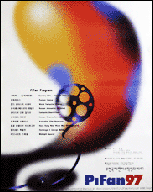 The first edition took place from August 29 to September 5, 1997 under the direction of the famous Korean filmmaker of the 1980s, Lee Jang-ho. At that time it was the early stages of the "IMF crisis," that brought Korea a period of economic hardship and worries about the future, and Lee wrote in his message: "Considering these shaky conditions [caused by the crisis], I feel that a film festival is needed now more than ever. If the economy is down, people begin to lose hope, but films can uplift their spirits and give people a sense of pride and inner self. For this reason [...] Puchon is on the right track to preserving our culture and promoting it to countries around the world." The first opening ceremony must have been really unforgettable because it's difficult to imagine a better beginning for a fantastic film festival than honouring the creator of fictional and fantastic films, George Melies. His most famous movie, Le Voyage dans la lune (Voyage to the Moon), 1902, was presented as the opening movie accompanied by a live orchestra (The Puchon Philharmonic Orchestra, one of the top in Korea) and not by a piano as has often used in the past. During the festival there was also an "homage a George Melies" presented that gave viewers the rare chance to see some of his masterpieces on the big screen. The program was composed of different sections: Puchon Choice, World Fantastic Cinema (affectionately referred to as World Fanta) and Fantastic Short Films, which have remained unchanged since this edition. Notably, Puchon Choice (the only competitive section for feature films) presented, among others, the debut of The Others director Alejandro Amenabar, Tesis; the "must-not-miss" The Kingdom by Lars Von Trier, and the world premiere of The Contact, the first mainstream feature by Jang Yoon-hyun. Among the other sections were "Korean Animation Revisited" focusing on the almost unknown history of Korean puppet animation, "Korean Cinema Retrospective" screening Korean films of the 1960s like the famous The Housemaid (1960) by Kim Ki-young, which was properly recognized in the retrospective of Kim's works held one month later at the 2nd PIFF. The "Australian Showcase" and the "Hong Kong New Wave Mini Retrospective" completed the varied program of 1997.
The first edition took place from August 29 to September 5, 1997 under the direction of the famous Korean filmmaker of the 1980s, Lee Jang-ho. At that time it was the early stages of the "IMF crisis," that brought Korea a period of economic hardship and worries about the future, and Lee wrote in his message: "Considering these shaky conditions [caused by the crisis], I feel that a film festival is needed now more than ever. If the economy is down, people begin to lose hope, but films can uplift their spirits and give people a sense of pride and inner self. For this reason [...] Puchon is on the right track to preserving our culture and promoting it to countries around the world." The first opening ceremony must have been really unforgettable because it's difficult to imagine a better beginning for a fantastic film festival than honouring the creator of fictional and fantastic films, George Melies. His most famous movie, Le Voyage dans la lune (Voyage to the Moon), 1902, was presented as the opening movie accompanied by a live orchestra (The Puchon Philharmonic Orchestra, one of the top in Korea) and not by a piano as has often used in the past. During the festival there was also an "homage a George Melies" presented that gave viewers the rare chance to see some of his masterpieces on the big screen. The program was composed of different sections: Puchon Choice, World Fantastic Cinema (affectionately referred to as World Fanta) and Fantastic Short Films, which have remained unchanged since this edition. Notably, Puchon Choice (the only competitive section for feature films) presented, among others, the debut of The Others director Alejandro Amenabar, Tesis; the "must-not-miss" The Kingdom by Lars Von Trier, and the world premiere of The Contact, the first mainstream feature by Jang Yoon-hyun. Among the other sections were "Korean Animation Revisited" focusing on the almost unknown history of Korean puppet animation, "Korean Cinema Retrospective" screening Korean films of the 1960s like the famous The Housemaid (1960) by Kim Ki-young, which was properly recognized in the retrospective of Kim's works held one month later at the 2nd PIFF. The "Australian Showcase" and the "Hong Kong New Wave Mini Retrospective" completed the varied program of 1997.
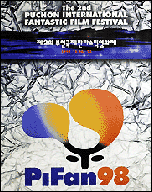 In contrast to the previous year, the second edition opened on December 18, 1998 during the freezing Korean winter. The festival lasted only six days, probably because of the financial downturn, but it managed to bring audiences some important programs. The new entry "Korean Fantastic Showcase" section (now renamed as "Made in Korea") featured five important Korean films: A Monster Man From Space by Kwon Hyok-jin, that together with his more famous "brother" Grand Evil Master Yonggary by Kim Ki-deok, represented the two monsters that emerged in 1967, when the Korean movie industry registered an unprecedented expansion both in quality and quantity; The Dream (1967) by master director Shin Sang-ok; and three Korean movies from 1998 that symbolize the important re-emergence of the horror-fantasy genre in Korean cinema: The Quiet Family by Kim Jee-woon, Whispering Corridors by Park Ki-hyung and The Soul Guardians by Park Kwang-choon. On these three contemporary films was also dedicated a very interesting seminar hosted by Kim So-young, Paul Willemen and Chris Berry entitled "The Historical and Cultural Specificity of Korean Fantastic Cinema". Those who are interested in Korean cinema also remember the 2nd PiFan for the special screening of The Story of the Bell Maker (aka Bell Pavilion, 1958) by the "forgotten master" Yang Joo-nam who has been living in seclusion since the 1960s. "How many people know about him?" writes scriptwriter Song Gil-han in the festival catalogue. "There must be a great many people who would not even remember his name. Being a contemporary member of the film industry I feel sorry and ashamed." Almost all of the works born from Yang's efforts have been lost and only The Story of the Bell Maker, deemed to be the most representative of all his productions, has survived and is now at the Korean Film Archive. The Archive also produced a documentary by famous female documentarist Byun Young-joo about master Yang that was screened during the festival.
In contrast to the previous year, the second edition opened on December 18, 1998 during the freezing Korean winter. The festival lasted only six days, probably because of the financial downturn, but it managed to bring audiences some important programs. The new entry "Korean Fantastic Showcase" section (now renamed as "Made in Korea") featured five important Korean films: A Monster Man From Space by Kwon Hyok-jin, that together with his more famous "brother" Grand Evil Master Yonggary by Kim Ki-deok, represented the two monsters that emerged in 1967, when the Korean movie industry registered an unprecedented expansion both in quality and quantity; The Dream (1967) by master director Shin Sang-ok; and three Korean movies from 1998 that symbolize the important re-emergence of the horror-fantasy genre in Korean cinema: The Quiet Family by Kim Jee-woon, Whispering Corridors by Park Ki-hyung and The Soul Guardians by Park Kwang-choon. On these three contemporary films was also dedicated a very interesting seminar hosted by Kim So-young, Paul Willemen and Chris Berry entitled "The Historical and Cultural Specificity of Korean Fantastic Cinema". Those who are interested in Korean cinema also remember the 2nd PiFan for the special screening of The Story of the Bell Maker (aka Bell Pavilion, 1958) by the "forgotten master" Yang Joo-nam who has been living in seclusion since the 1960s. "How many people know about him?" writes scriptwriter Song Gil-han in the festival catalogue. "There must be a great many people who would not even remember his name. Being a contemporary member of the film industry I feel sorry and ashamed." Almost all of the works born from Yang's efforts have been lost and only The Story of the Bell Maker, deemed to be the most representative of all his productions, has survived and is now at the Korean Film Archive. The Archive also produced a documentary by famous female documentarist Byun Young-joo about master Yang that was screened during the festival.
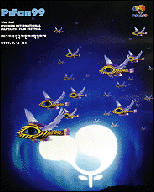 From the third edition the festival definitively moved its dates to mid-July (July 16-24, 1999) hoping to play a role also as a refrigerant to cool the sweltering midsummer heat. Surely not the best edition from the point of view of the program, this year is remembered for the beginning of the Cine-Rock Nights (that became one of the most popular features of PiFan) and for its special and unscheduled events. Together with the Pusan International Film Festival, PiFan '99 became the focal point of the mobilization to defend the Korean Screen Quota System, hosting a rally at which jury chairman James B. Harris gave a speech in favour of protecting cultural diversity. The programmed special events feature two workshops on the production of digital films; a marketing seminar that offered useful information for the international marketing of Korean films; an academic seminar: "Marking the 80th Anniversary of Korean Films"; an exhibition with still shots from 50 Korean films representing the period between the pioneering days and the present; and a special video screening of Grand Evil Master Yonggary, since the print is not available in Korea.
From the third edition the festival definitively moved its dates to mid-July (July 16-24, 1999) hoping to play a role also as a refrigerant to cool the sweltering midsummer heat. Surely not the best edition from the point of view of the program, this year is remembered for the beginning of the Cine-Rock Nights (that became one of the most popular features of PiFan) and for its special and unscheduled events. Together with the Pusan International Film Festival, PiFan '99 became the focal point of the mobilization to defend the Korean Screen Quota System, hosting a rally at which jury chairman James B. Harris gave a speech in favour of protecting cultural diversity. The programmed special events feature two workshops on the production of digital films; a marketing seminar that offered useful information for the international marketing of Korean films; an academic seminar: "Marking the 80th Anniversary of Korean Films"; an exhibition with still shots from 50 Korean films representing the period between the pioneering days and the present; and a special video screening of Grand Evil Master Yonggary, since the print is not available in Korea.
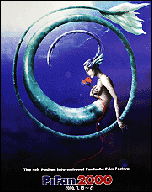 The 4th edition (July 13-21, 2000) opened under the new slogan "Freedom, Resistance and Rebellion" and PiFan became the only supporting member in Asia of the European Fantastic Film Festival Federation (EFFFF). Among the sections, it's worth noting the opening of the "Forbidden Zone", created as a challenge to present times. "A challenge to authority, the system, so-called sensibility and customs, ethics, sex and gender," wrote Ellen Kim and Cassie Yoo in the catalogue. Also notable was an interesting homage to the recently-deceased Korean actor Choi Moo-ryong, who debuted in 1951 and become an idol among veteran actors from the same decade; and the spotlight on Finland, with an hilarious introduction by the former director of the Helsinki International Film Festival Mika Seppala which was published in the catalogue. PiFan 2000 also cooperated with the Coalition for Cultural Diversity in Moving Images in co-organizing two events: a night meeting with the proposal to establish an international coalition to protect cultural diversity in moving images, and a campaign to collect one million signatures in support of the Korean Screen Quota System. Finally, it's important to remember to creation of the Megatalk, sessions of free talk between the festival's guests and audience that soon became another important feature of PiFan. Four Megatalks were organized, focusing on: director Kim Ki-duk, director Brian O'Hara, "Being a Woman Filmmaker in Chungmuro," and "The Screen Quota".
The 4th edition (July 13-21, 2000) opened under the new slogan "Freedom, Resistance and Rebellion" and PiFan became the only supporting member in Asia of the European Fantastic Film Festival Federation (EFFFF). Among the sections, it's worth noting the opening of the "Forbidden Zone", created as a challenge to present times. "A challenge to authority, the system, so-called sensibility and customs, ethics, sex and gender," wrote Ellen Kim and Cassie Yoo in the catalogue. Also notable was an interesting homage to the recently-deceased Korean actor Choi Moo-ryong, who debuted in 1951 and become an idol among veteran actors from the same decade; and the spotlight on Finland, with an hilarious introduction by the former director of the Helsinki International Film Festival Mika Seppala which was published in the catalogue. PiFan 2000 also cooperated with the Coalition for Cultural Diversity in Moving Images in co-organizing two events: a night meeting with the proposal to establish an international coalition to protect cultural diversity in moving images, and a campaign to collect one million signatures in support of the Korean Screen Quota System. Finally, it's important to remember to creation of the Megatalk, sessions of free talk between the festival's guests and audience that soon became another important feature of PiFan. Four Megatalks were organized, focusing on: director Kim Ki-duk, director Brian O'Hara, "Being a Woman Filmmaker in Chungmuro," and "The Screen Quota".
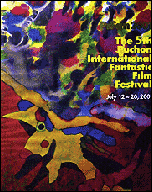 In 2001 the festival slogan changed again to become "Romance, Fantasy and Adventure," and Korean director and KOFIC commissioner Kim Hong-joon became the new festival director. Kim wrote in his message: "Ever since its birth, cinema has been with the masses. But the popularity which PiFan seeks does not mean the narrow-minded popularity of the so-called mainstream cinema which is dominated by Hollywood movies. What PiFan hopes for is a healthy and innocent encounter with the masses, as in the days of early cinema. Also, PiFan will not stop supporting alternative kinds of popularity identified with experimentation and non-conventional modes of filmmaking, while maintaining its advocacy of genre movies. [...] Like an old Korean proverb, if a ten-year period completes one turn of the world, the 5th PiFan has come halfway down its path." Among the features to be noted was a retrospective on the father of martial arts filmmaking King Hu; and the special screenings of two worldwide famous horror classics: Frankenstein (James Whale, 1931) and The Mummy (Karl Freund, 1932).
In 2001 the festival slogan changed again to become "Romance, Fantasy and Adventure," and Korean director and KOFIC commissioner Kim Hong-joon became the new festival director. Kim wrote in his message: "Ever since its birth, cinema has been with the masses. But the popularity which PiFan seeks does not mean the narrow-minded popularity of the so-called mainstream cinema which is dominated by Hollywood movies. What PiFan hopes for is a healthy and innocent encounter with the masses, as in the days of early cinema. Also, PiFan will not stop supporting alternative kinds of popularity identified with experimentation and non-conventional modes of filmmaking, while maintaining its advocacy of genre movies. [...] Like an old Korean proverb, if a ten-year period completes one turn of the world, the 5th PiFan has come halfway down its path." Among the features to be noted was a retrospective on the father of martial arts filmmaking King Hu; and the special screenings of two worldwide famous horror classics: Frankenstein (James Whale, 1931) and The Mummy (Karl Freund, 1932).
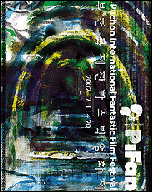 Maybe in its 6th edition (July 11-20, 2002) the festival offered the most varied and interesting program (so far). The section "Made in Korea" presented a contemporary masterpiece like Sympathy for Mr. Vengeance (Park Chan-wook, 2002); the "Korean Cinema Retrospective" offered a journey through movies from the 60's to the 80's entitled "Korean Literature in Cinema" composed of work that represent the turbulent periods in Korean history like Evergreen Tree (Shin Sang-ok, 1961), Old Man Making a Jar (Choi Ha-won, 1969), Flame (Yu Hyun-mok, 1975) and A Man with Three Coffins (Lee Jang-ho, 1987), one of the most important Korean movies of the 1980s. Other special programs and screenings enriched the program, including a focus on "mysterious" German director Werner Herzog, on the "hard to define" Japanese director Miike Takashi, on the early movies of Peter Jackson and on the very hard to find works by the Kuchar Brothers, the true living underground artists from the United States. The special screening was entitled "Blue Movie Bacchanalia" and presented the so-called "Blue Movies", silent underground sex films produced and distributed illegally in the beginning of cinema history. PiFan organized an extraordinary and unique screening where the "Blue Movies" were accompanied by Korean DJ Dalpalan's (also famous for his collaborations with Jang Sun-soo) acclaimed music mixes. A seminar about Censorship and Cinema (a still delicate topic in Korean society) was held afterwards. One Megatalk session was focused on "Miike Takashi vs Kim Jee-woon", during which the two directors met for the first time and gave the audience the chance to gain deeper insight into the directors' world of "pathos, humour and mayhem."
Maybe in its 6th edition (July 11-20, 2002) the festival offered the most varied and interesting program (so far). The section "Made in Korea" presented a contemporary masterpiece like Sympathy for Mr. Vengeance (Park Chan-wook, 2002); the "Korean Cinema Retrospective" offered a journey through movies from the 60's to the 80's entitled "Korean Literature in Cinema" composed of work that represent the turbulent periods in Korean history like Evergreen Tree (Shin Sang-ok, 1961), Old Man Making a Jar (Choi Ha-won, 1969), Flame (Yu Hyun-mok, 1975) and A Man with Three Coffins (Lee Jang-ho, 1987), one of the most important Korean movies of the 1980s. Other special programs and screenings enriched the program, including a focus on "mysterious" German director Werner Herzog, on the "hard to define" Japanese director Miike Takashi, on the early movies of Peter Jackson and on the very hard to find works by the Kuchar Brothers, the true living underground artists from the United States. The special screening was entitled "Blue Movie Bacchanalia" and presented the so-called "Blue Movies", silent underground sex films produced and distributed illegally in the beginning of cinema history. PiFan organized an extraordinary and unique screening where the "Blue Movies" were accompanied by Korean DJ Dalpalan's (also famous for his collaborations with Jang Sun-soo) acclaimed music mixes. A seminar about Censorship and Cinema (a still delicate topic in Korean society) was held afterwards. One Megatalk session was focused on "Miike Takashi vs Kim Jee-woon", during which the two directors met for the first time and gave the audience the chance to gain deeper insight into the directors' world of "pathos, humour and mayhem."
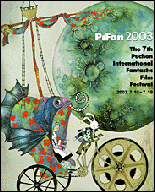 For the first time, in 2003, a Korean feature was selected as the opening movie, the animation blockbuster Wonderful Days (Kim Moon-saeng, 2003), and another Korean movie won the competition, the extraordinary debut by Jang Jun-hwan Save the Green Planet! As usual, the special sections represented one of the most prestigious parts of the program, featuring a focus on Bollywood cinema; a retrospective devoted to eccentric Canadian filmmaker Guy Maddin; a Shaw Brothers Retrospective; a tribute to the "master of violence" Japanese director Kinji Fukusaku, who passed away at the beginning of 2003; and a special screening of the complete Qatsi trilogy by Godfrey Reggio.
For the first time, in 2003, a Korean feature was selected as the opening movie, the animation blockbuster Wonderful Days (Kim Moon-saeng, 2003), and another Korean movie won the competition, the extraordinary debut by Jang Jun-hwan Save the Green Planet! As usual, the special sections represented one of the most prestigious parts of the program, featuring a focus on Bollywood cinema; a retrospective devoted to eccentric Canadian filmmaker Guy Maddin; a Shaw Brothers Retrospective; a tribute to the "master of violence" Japanese director Kinji Fukusaku, who passed away at the beginning of 2003; and a special screening of the complete Qatsi trilogy by Godfrey Reggio.
The future? Bright. PiFan succeeds because it meets the tastes of the audience, it's programmed by critics and scholars, it offers every year a great variety of movies and it has never had any aspiration to showbiz glitz or star power.
Darcy Paquet
Just what is a "fantastic" film festival, anyway? The idea comes from Europe, with its origins in major festivals that were launched in Sitges (Spain), Oporto (Portugal), Rome, and Brussels from the late 1960s to the early 1980s. The word fantastic implies works that appeal to our fantasies, rather than our sense of realism, but these early festivals placed a particular emphasis on the darker end of fantasy: horror films, science fiction, and other strange, hard-to-classify cult items. If the movies screening at Cannes or Venice tackled social issues, aesthetics, and philosophical questions, the low-budget underground films that unspooled at Sitges or Rome would probe the deeper reaches of human psychology.
The idea took off, and in 1987 these events banded together into the European Fantastic Film Festival Federation (EFFFF). Today the federation encompasses annual events in Espoo (Finland), Luxembourg, Amsterdam, Lund (Sweden), and Neuchatel (Switzerland) in addition to the original four. A group of smaller festivals throughout Europe have signed on as "adherent members," and outside of Europe, the Fantasia festival in Montreal and PiFan in Korea participate as "supporting members." Together, the federation encourages networking, promotes the concept of fantastic film worldwide, and also bestows its own awards (a Silver Melies presented to the best European fantastic film at each of the nine member festivals, and a Golden Melies chosen once a year for the best of the lot).
PiFan's relation to the EFFFF and to the concept of fantastic film in general is an interesting one. Its geographical and cultural distance from Europe can't help but give the event a different flavor from the festivals on which is it modeled. In this sense, PiFan organizers throughout its history have worked to strike a balance between continuing in the established tradition of fantastic film festivals, and also serving the needs of the local culture.
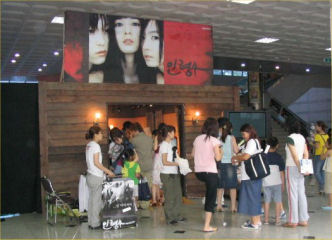 To figure out what makes PiFan different, it is best to look at the audience. A film festival only really deserves to call itself a film festival if it cultivates its own audience. Moreso than the films it chooses to screen, it is the collective enthusiasms and quirks of its viewers that gives any festival its true character. PiFan's audience, like that of other festivals in Korea, is mostly young (late teens or twenties), and seems to feature more women than men. They enjoy a mix of film styles from short films and Bollywood musicals to midnight screenings and dark, twisted fare such as this year's Nekromantic (1987) that would struggle to make it past the local censors. I would argue that PiFan's audience has developed a special affection for Japanese cinema, considering the warm response given to films like The Taste of Tea, Zebraman and Josee, the Tiger and the Fish at this year's event. In a general sense, though, the tastes of PiFan's audience seem to spring from a fusion of cinephilia, curiosity, and a passion for cult cinema (in the local context). In Korea, Bollywood films, Japanese anime, the films of Miike Takashi, or individual titles like Save the Green Planet have all spawned cult groups of devoted fans, who communicate through specialized communities on the internet. Of all the festivals that take place in Korea, PiFan is best at catering to these groups.
To figure out what makes PiFan different, it is best to look at the audience. A film festival only really deserves to call itself a film festival if it cultivates its own audience. Moreso than the films it chooses to screen, it is the collective enthusiasms and quirks of its viewers that gives any festival its true character. PiFan's audience, like that of other festivals in Korea, is mostly young (late teens or twenties), and seems to feature more women than men. They enjoy a mix of film styles from short films and Bollywood musicals to midnight screenings and dark, twisted fare such as this year's Nekromantic (1987) that would struggle to make it past the local censors. I would argue that PiFan's audience has developed a special affection for Japanese cinema, considering the warm response given to films like The Taste of Tea, Zebraman and Josee, the Tiger and the Fish at this year's event. In a general sense, though, the tastes of PiFan's audience seem to spring from a fusion of cinephilia, curiosity, and a passion for cult cinema (in the local context). In Korea, Bollywood films, Japanese anime, the films of Miike Takashi, or individual titles like Save the Green Planet have all spawned cult groups of devoted fans, who communicate through specialized communities on the internet. Of all the festivals that take place in Korea, PiFan is best at catering to these groups.
In late 2003 I traveled to the Sitges festival in Spain to participate on one of its various juries, and I noticed major differences between the Sitges crowd and the viewers at Puchon. The audience at Sitges is quite well-known even in Europe for being extremely vocal at screenings. At times, I almost felt like I was watching a gladitorial match, as each severed limb or punctured artery was greeted with a roar from the crowd. (Action on a less gory level elicited a slightly lesser response... for example, the groundbreaking Thai action film Ong Bak drew fewer cheers than I would have expected.) Films that were simply bad -- 3D horror movie The Park from Hong Kong comes to mind -- drew forth catcalls and derisive howls. It was a visceral sort of fun, that contrasted oddly with the serene, picturesque resort town of Sitges located alongside the Mediterranean.
Korean audiences are also quite vocal, but in a different way. The Puchon crowd screams at good horror films, "oohs" and "ahs" at complex martial arts sequences, and squirms at explicit gore. It feels more like taking a ride at an amusement park. Apart from being frightened, bemused, or weirded-out by what they see, audiences display an intense curiosity at post-screening q&a sessions with the director. Some viewers try to intellectualize what they see, asking about hidden social messages or symbolism in the director's work. Others just want to know, "Were those real eyeballs floating in the toilet?"
I've attended many of the past editions of the festival, but 2004 was the first time that I could actually stay in Puchon for the duration of the event. (Doing the one-hour commute back and forth to Seoul is possible, but it tends to wear you out after a few days.) I caught 17 screenings over the course of the week, some quite exciting, others less so. I ended up with two personal favorites: One Night in Mongkok, a crime thiller from Hong Kong, and Josee, the Tiger and the Fish, an eccentric and moving drama from Japan. Derek Yee's One Night in Mongkok centers around a poor hitman and a young prostitute, both from the same area of mainland China, who get caught up in a gang war and a wide-ranging police investigation. Like Infernal Affairs and many other films from Hong Kong, One Night in Mongkok juggles a large cast of characters with exceptional skill. Though the film's protagonists are all aligned against each other in some way, we empathize with many of them, so that their collision at the end provides for real suspense and drama.
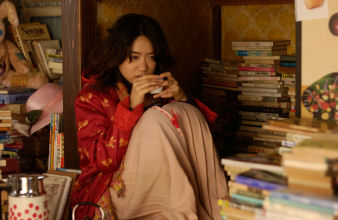 Inudo Isshin's Josee, the Tiger and the Fish (pictured left) is an unexpected love story between two very likeable leads: a cocky high school boy and a young disabled woman whose mother shields her from the outside world. I don't really want to say much about the film's plot or style, because it's better just to watch it cold. But I can say that the performances of the main actors was exceptional, and the film's honesty and power can catch you at unexpected times.
Inudo Isshin's Josee, the Tiger and the Fish (pictured left) is an unexpected love story between two very likeable leads: a cocky high school boy and a young disabled woman whose mother shields her from the outside world. I don't really want to say much about the film's plot or style, because it's better just to watch it cold. But I can say that the performances of the main actors was exceptional, and the film's honesty and power can catch you at unexpected times.
I guess both films only marginally qualify as "fantastic"... One Night in Mongkok features some shocking violence and an odd (mystic?) link between two characters, while Josee, the Tiger and the Fish has some unusual and interesting computer-generated images that embody the characters' visions. Otherwise they operate mostly in a realistic mode, perhaps explaining why they screened in the "World Fantastic Cinema" section instead of the Puchon Choice competition... In practice, PiFan often makes room for high quality genre films like these that don't really qualify as fantastic, so as to give local audiences a chance to experience them.
One perhaps accidental theme that emerged in the program was the "Asian superhero:" Spider-Man spoof Gagamboy from the Philippines (in the main competition), local hit Arahan (also in competition), and Miike Takashi's Zebraman in the Family Section (likely the first time that maverick director Miike has ever found himself programmed alongside kiddie fare). In inspired and goofy fashion, each film features a geeky outcast who through luck, ch'i or a run-in with nasty chemicals end up defending their nations against the forces of evil.
The approach of the three films was all quite refreshing, especially when compared with the spate of comic book heroes that have taken over Hollywood in recent years. All superhero films are, at their heart, about the exercise of power, and it's nice to see the self-mocking, unromanticized depiction of power in these films, instead of the shock and awe we typically get from Hollywood.
 Gagamboy in particular, despite its lighthearted and often silly tone, makes you stop and think. What if Peter Parker had grown up not in New York City, but in the slums of Manila? Even though Spider-Man, the most nuanced of recent Hollywood superhero films, goes out of its way to portray its hero as being modest and of humble origins, the juxtaposition with Gagamboy is telling. Made with a tiny sliver of the budget of Spider-Man, Gagamboy provides many laughs and makes for an interesting alternative take on where superhuman powers will take you in life.
Gagamboy in particular, despite its lighthearted and often silly tone, makes you stop and think. What if Peter Parker had grown up not in New York City, but in the slums of Manila? Even though Spider-Man, the most nuanced of recent Hollywood superhero films, goes out of its way to portray its hero as being modest and of humble origins, the juxtaposition with Gagamboy is telling. Made with a tiny sliver of the budget of Spider-Man, Gagamboy provides many laughs and makes for an interesting alternative take on where superhuman powers will take you in life.
Zebraman takes as its hero a nerdy, middle-aged schoolteacher whose students all think he's a dork. Even his wife and kids think he's a dork. Late at night, he spends his time at the sewing machine putting together a costume modeled after "Zebraman," a 20-year old TV show that had such terrible ratings that it disappeared after half a season. When he finished the costume and puts it own, however, he finds himself taking on the powers of the TV hero. Why could that be...?
The Puchon crowd went just crazy for this movie. (Not being in the competition section, it didn't qualify for the audience award) While watching it, I was also struck by how well the humor in the film was transmitted to Korean audiences, due to linguistic and cultural similarities. Glancing back and forth at the Korean and English subtitles confirmed this -- a lot of jokes that were awkward to translate into English were very smooth in Korean. Also, though at times Korea and Japan seem like the two most distant cultures in the world, there are many shared cultural enthusiasms and attitudes as well. Seeing the reaction to this film made me think that someday -- whether it takes 10 or 20 years -- Japanese films are going to develop a significant mainstream following in Korea.
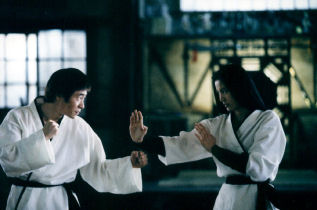 Ryu Seung-wan's Arahan doesn't describe itself as a superhero film, but it follows the same basic pattern of having its hero discover an ability to wield superhuman powers, and then using those powers to fight evil. The director has dreamed up a very creative setup to the story, whereby the skills of tao masters of old are carried on in modern day life by the working classes, without their realizing it. "How do you think old women are able to hoist heavy bundles and balance them on their heads?" we are asked. "It's all comes from the power of ch'i."
Ryu Seung-wan's Arahan doesn't describe itself as a superhero film, but it follows the same basic pattern of having its hero discover an ability to wield superhuman powers, and then using those powers to fight evil. The director has dreamed up a very creative setup to the story, whereby the skills of tao masters of old are carried on in modern day life by the working classes, without their realizing it. "How do you think old women are able to hoist heavy bundles and balance them on their heads?" we are asked. "It's all comes from the power of ch'i."
The festival jury was clearly very enthusiastic about this film, which shows local star (and the director's brother) Ryu Seung-beom being trained in harnessing his ch'i by veteran Ahn Sung-ki and the younger Yun So-yi in her debut role. Some people have complained about how the film is put together -- that the final fight scene is too long, or that its plot meanders too much -- but for me (and the Puchon crowd), the film's warmth and humor more than compensate.
(It turns out that these three are not the only Asian superhero films to appear these days. I'm also hearing great things about a new live-action film from Japan titled Cutie Honey, from the director of anime hit Neon Genesis Evangelion. Perhaps this is the start of a new region-wide cinematic trend?)
It strikes me as somewhat fitting that Korea's major fantastic film festival is located in the suburban city of Bucheon, one of the sindosi ("new cities") that have grown up around Seoul in the past couple decades. Where, not long ago, rice paddies or empty fields stood, an extensive city has been built out of nothing. Despite its pricey apartment complexes and upscale department stores, Puchon (or "Bucheon," by its new spelling) has a bit of a constructed, artificial feel to it sometimes -- like the product of someone's overexpansive imagination. A perfect place to watch films that aim beyond reality, to create new worlds out of celluloid and light.